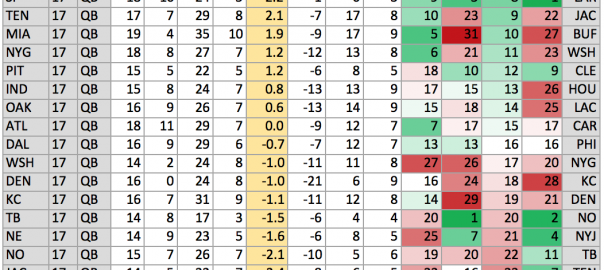A Framework for Accessing Individual Defensive Performance in Coverage
1. Introduction
Current defensive coverage metrics are only calculated on plays where that defender’s assigned offensive player is the one targeted. This approach is flawed and incomplete. On any given play, there are around five available receivers, and the best coverage may prevent the quarterback from even throwing the ball to a given receiver. Further, these metrics identify coverage assignment simply by considering the responsible defender to be the nearest one at the time the ball arrives. Thus, this methodology only gives us coverage assignment for one player per play, and even that assignment is questionable; the closest defender at one particular moment isn’t necessarily the assigned defender.
The work presented here illustrates a framework we’ve developed to address these shortcomings. Our approach begins by identifying the responsibilities of each defender on a given play. If a player is in man (everywhere) coverage, he is assigned a specific offensive player whom he is to cover until the ball is thrown. On the other hand, if a player is in zone coverage, he is instead responsible for an area and any receivers who enter that area. Because the responsibilities of a player differ in each coverage type, the evaluation of performance should be different for each. Once we identify the type of coverage being played by each defender, we then consider two separate time points for evaluation. For one, we consider the time frame after the pass is thrown. This is the most straightforward but limits us to only the targeted receivers, as players tend to abandon their assignments and converge to the ball once it is thrown. To include all defenders in our analysis, we also consider the time frame between the snap and the pass. Figure 1 below illustrates our proposed framework…….
